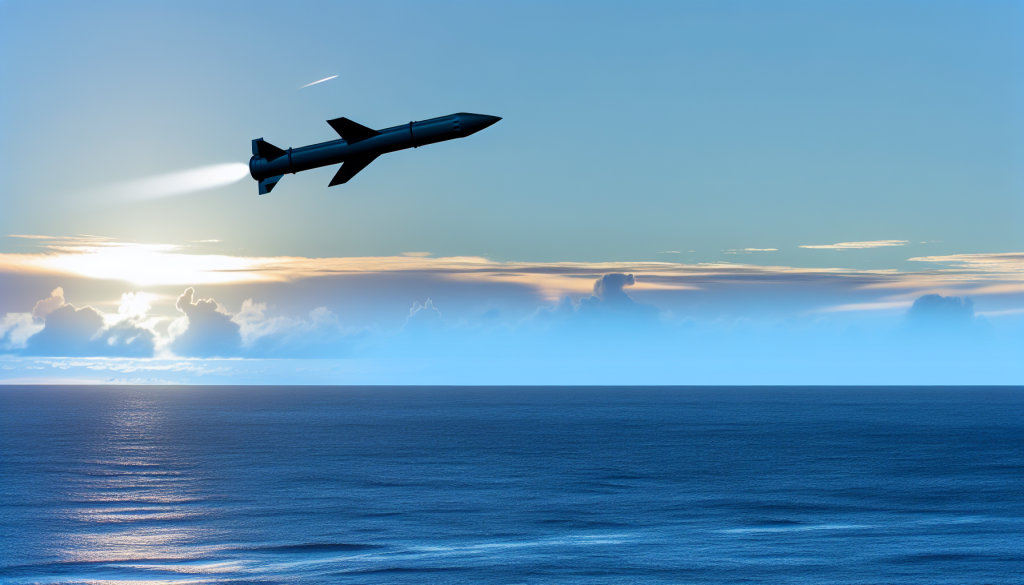The Rise of Cheap Ground-Launched Cruise Missiles in Modern Warfare
In contemporary military strategy, cheap ground-launched cruise missiles (GLCMs) are emerging as potential game-changers in conflict zones, particularly in the Pacific. Their affordability, mobility, and effectiveness are reshaping how nations prepare for and engage in warfare, especially in areas like the Taiwan Strait.
A Shift in Military Paradigms
Historically, warfare has often hinged on expensive, high-tech weaponry. However, the success of Ukraine in leveraging affordable munitions such as the Flamingo missiles illustrates a significant shift. These weapons, along with one-way attack drones, have proven that lower-cost alternatives can inflict substantial damage on well-established military powers. This trend is catching the attention of nations with vested interests in regional stability and defense.
Taiwan’s Defense Strategy: Inspired by Ukraine
Taiwan is actively developing its arsenal of inexpensive missiles, aiming to bolster its defenses against potential Chinese aggression. The Chien Feng IV one-way attack drone and an 800-km ground-launched cruise missile are shining examples of Taiwan’s approach. These munitions are designed to be cost-effective, with the price for each unit meticulously capped at $200,000. Such strategies reflect an urgent need for Taiwan to create a robust area-denial complex that could deter potential adversaries.
Strategic Geography and Advantages
Geographically, the Taiwan Strait provides a unique opportunity for missile deployment. The proximity of a Chinese invasion fleet allows for straightforward targeting strategies. Instead of complex multiphase plans involving intricate logistics and multifaceted attacks, defense planners can prioritize speed and volume. By launching as many missiles as possible in the shortest time frame, Taiwan hopes to overwhelm opposing forces—a strategy that benefits significantly from mass-producible, cheaper munitions.
The Evolving Dynamics of Chinese Military Strategy
China’s response to the evolving threat landscape is marked by its own formidable missile arsenal, which includes a wide range of advanced munitions. However, these come at a higher cost, often leading to difficult trade-offs in military planning. As China seeks to expand its capabilities through cheaper drones, it may find that balancing the costs of sophisticated systems with affordable options could be vital for sustaining prolonged engagements.
The Role of the United States in the Pacific Theater
For the United States, the implications of this shift towards cheaper missile options are profound. While American forces have traditionally relied on high-end munitions like the JASSM-ER, the increasing reliance on inexpensive alternatives could reshape U.S. military doctrine and logistics. The Pentagon is exploring various options for budget-friendly cruise missiles, aiming to ensure readiness in a potential conflict scenario while considering operational constraints.
Challenges of Logistics and Maintenance
One of the significant hurdles in deploying cheaper missiles is the logistics behind their maintenance and operation. The U.S. Marine Corps is making strides by establishing littoral regiments designed to operate in challenging environments, yet they face persistent issues around support and resupply. This reality raises questions about whether these forces can effectively deploy large numbers of new missile systems while also maintaining operational readiness.
Implications for Future Warfare
As military technology advances, the role of cheap cruise missiles may make a considerable impact on future combat dynamics. Their capacity to rapidly deliver significant firepower can potentially outmaneuver traditional high-cost systems. However, the effective integration of these munitions into existing military frameworks requires careful consideration of technological compatibility, logistical pragmatism, and strategic foresight.
In a landscape where low-cost solutions can yield outsized results, the balance of power in the Pacific remains fluid. Nations like Taiwan are poised to harness the potential of these munitions to fortify their defenses, while larger powers like China and the U.S. must adapt to stay relevant in the changing tide of warfare. The next Pacific war may indeed hinge on the effectiveness of these inexpensive, yet capable weapons.

